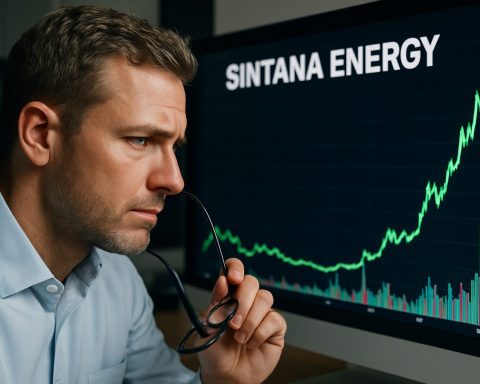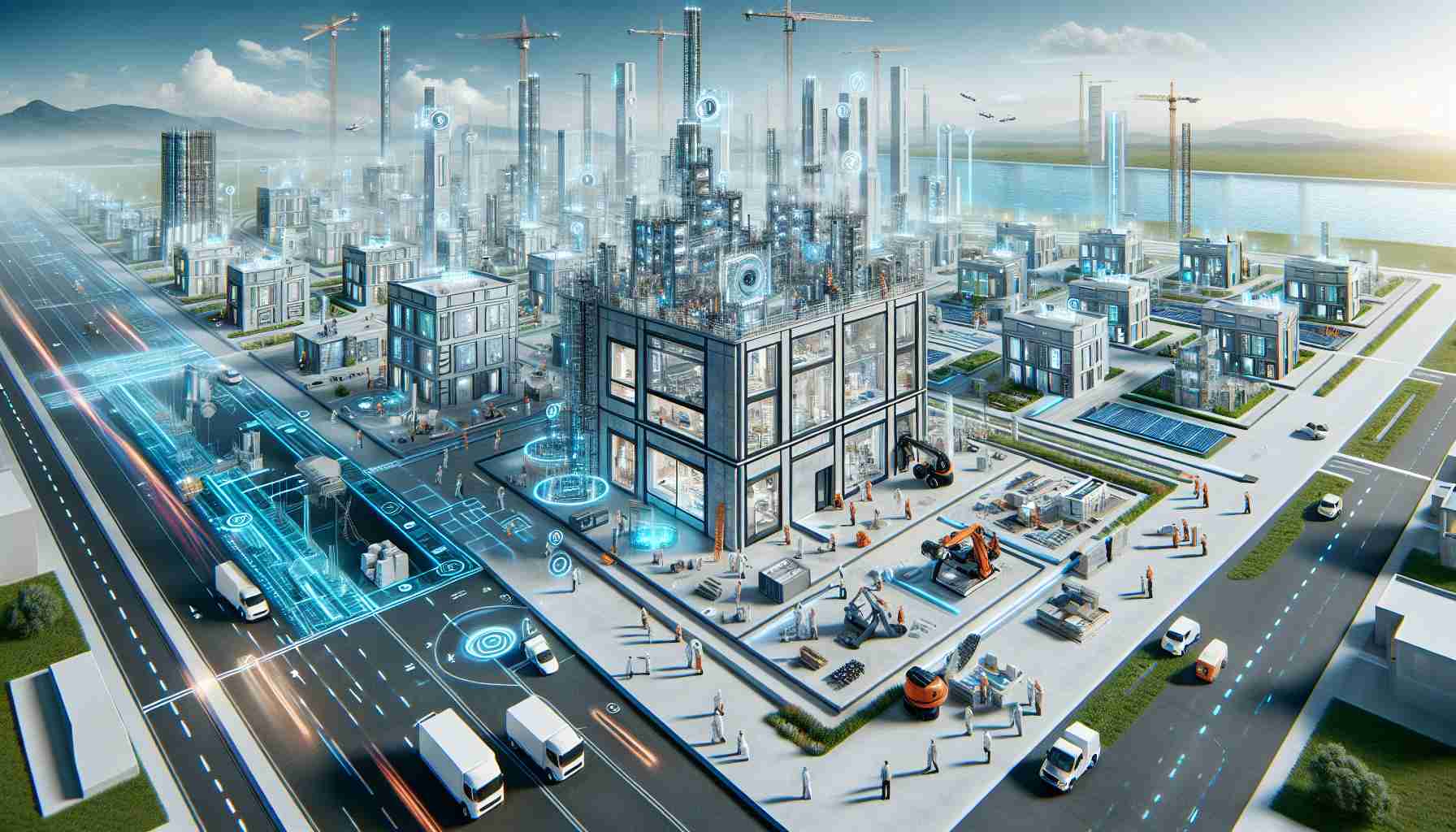- Greece’s Public Power Corporation (PPC) is spearheading a €5.75 billion initiative to transform Western Macedonia into a green energy and technology hub.
- A €2.3 billion data center project, planned to be among the largest globally, is at the heart of this transformation, with completion targeted by 2027.
- The project includes 2,130 megawatts of solar capacity and 860 megawatts of energy storage, revitalizing former mining sites with renewable energy.
- The Ptolemaida 5 plant will transition from lignite to natural gas and eventually to a combined-cycle gas turbine.
- Greece’s first industrial-scale green hydrogen production unit is under development in Amyntaio.
- The initiative is expected to create up to 20,000 construction jobs and 2,000 operational positions, bolstering economic growth alongside environmental responsibility.
- PPC’s forward-thinking vision is supported by state and European financial tools, marking Greece as a leader in sustainable energy innovation.
In the heart of Greece, a seismic shift in energy strategy is underway, orchestrated by the Public Power Corporation (PPC). With a dazzling €5.75 billion earmarked for an ambitious project in Western Macedonia, the region is on the cusp of metamorphosing into a formidable green energy and technology hub that holds promise not just for Greece, but for all of southeastern Europe. This colossal endeavor stands as a beacon of innovation, transforming landscapes ravaged by time into icons of future energy solutions.
At the core of this towering transformation lies a sprawling €2.3 billion data center, poised to emerge from the shadows of the Agios Dimitrios power plant. Slated for a potential grand opening by 2027, this facility is projected to be among the globe’s largest, with an eye on expansion to a mammoth 1,000 megawatts, driven solely by demand dynamics. With breathtaking ambition, PPC’s vision encompasses more than just data prowess.
In a seamless blend of technology and sustainability, solar parks will stretch across the dusty remnants of former mining sites, bringing them to life with a vibrant mosaic of photovoltaic panels. These sunswept arrays, infused with cutting-edge technology, aim to deliver a staggering 2,130 megawatts of solar capacity. Meanwhile, energy storage projects, powered by an infusion of €940 million, promise to bolster this renewable revolution with 860 megawatts of capacity, offering resilience against the fluctuations of the grid.
Yet, even tradition finds its place in this revolutionary mix. The Ptolemaida 5 power plant, an emblem of lignite reliance, will pivot from its coal-heavy past into the future, transitioning first to a 350 megawatt natural gas unit and eventually to a 500 megawatt combined-cycle gas turbine. This iterative transformation hinges on the strategic decisions linked to the burgeoning data center initiative.
Cradled within these plans lies Greece’s first industrial-scale green hydrogen production unit, taking shape in Amyntaio under the auspices of the Hellenic Hydrogen joint venture. This landmark project signals Greece’s forward march into a future where hydrogen stands as the fuel of choice for clean energy systems.
Such sweeping changes promise economic revitalization alongside environmental responsibility. Up to 20,000 jobs wait to be filled during the construction phase, with a further 2,000 anticipated as operations commence. Prime Minister Kyriakos Mitsotakis, resonating with enthusiasm at the unveiling of this imaginative blueprint, hailed PPC as a “national champion.” He underscored the extraordinary vision and scope of this undertaking, emphasizing the collective strength of PPC, state backing, and European financial tools.
In Western Macedonia, the upliftment of an entire region awaits—a vibrant tableau where sustainability coalesces with economic growth. This grand plan compels us to envision a greener, tech-savvy landscape, where innovation and tradition dance hand in hand, propelling Greece towards a luminous future on the global energy stage.
A Future Powered by the Sun: Greece’s Green Energy Revolution Unveiled
Greece’s Ambitious Leap into Green Energy
Greece’s Public Power Corporation (PPC) is paving the way for a groundbreaking transformation of Western Macedonia into a premier green energy and technology hub. With an investment of €5.75 billion, this project aims to not only revolutionize Greece’s energy infrastructure but also position the region as a leader in southeastern Europe’s sustainable energy landscape.
Key Elements of the Project
1. Large-Scale Data Center Development: At the heart of this initiative is a monumental €2.3 billion data center, planned to open by 2027. It promises to be one of the largest globally, potentially reaching a capacity of 1,000 megawatts. This aligns with global trends emphasizing investment in digital infrastructure powered by renewable sources.
2. Solar Park Proliferation: Utilization of former mining territories for solar parks will inject life into these landscapes, with a vision for 2,130 megawatts of solar capacity. This transformation underscores the strategy to adopt photovoltaic technology, a key player in sustainable energy.
3. Energy Storage Solutions: With €940 million allocated to energy storage projects providing 860 megawatts of capacity, these measures aim to stabilize energy supply, crucially balancing the grid’s demands with renewable resources.
4. Hydrogen Production Initiatives: The planned industrial-scale green hydrogen production in Amyntaio, undertaken by Hellenic Hydrogen, signals Greece’s strategic shift to hydrogen as a cornerstone of future clean energy solutions.
5. Transition of Ptolemaida 5 Power Plant: Transitioning from lignite-based energy, the plant will evolve through intermediate natural gas usage towards a 500 megawatt combined-cycle gas turbine, aligning with European Union climate objectives.
Addressing Key Reader Questions
Why is this project important for Greece and Europe?
This project’s significance lies in its dual capacity to enhance energy independence and establish Greece as a sustainable energy leader. It aligns with the European Union’s Green Deal, which aims for climate neutrality by 2050, while fostering regional economic development through job creation.
What is the potential impact on local employment?
The project is forecast to create up to 20,000 jobs during its construction phase, offering substantial local economic benefits and skills development. An additional 2,000 jobs are anticipated once operations commence, driving long-term regional prosperity.
How does this project fit with global energy trends?
Globally, there’s a pivot towards clean energy investments. The International Energy Agency highlights that renewable power capacity is set to expand by 50% by 2024, with solar photovoltaics contributing the most. Greece’s project mirrors these trends, offering a sustainable model for others to follow.
Pros and Cons Overview
Pros:
– Environmental Sustainability: Reduces reliance on fossil fuels, significantly lowering carbon emissions.
– Economic Growth: Enhances local economies through job creation and infrastructure investment.
– Energy Security: Facilitates energy independence, reducing reliance on external energy sources.
Cons:
– High Initial Costs: Large capital investment needed upfront can be a barrier.
– Implementation Challenges: Coordinating multiple projects simultaneously requires robust management and planning.
– Technology Integration: Adopting new technologies can pose unforeseen challenges and require skilled workforce training.
Actionable Recommendations
1. Stakeholder Engagement: Maintain open communications with local communities and stakeholders to align objectives and mitigate potential disruptions.
2. Investment in Skills Development: Prioritize training programs to prepare the workforce for upcoming opportunities, enhancing employment prospects.
3. Monitoring and Evaluation: Implement rigorous project management practices to track progress and promptly address any challenges.
Relevant Links
– Explore more about renewable energy initiatives worldwide at International Energy Agency
– Learn about Greece’s ongoing projects and policies through the Greek Embassy
In conclusion, Greece’s green energy project is a bold step toward a sustainable future. By embracing innovation and traditional energy sources, the nation can lead in regional energy reform, setting an example in the global march towards reduced carbon footprints and enhanced energy resilience.









